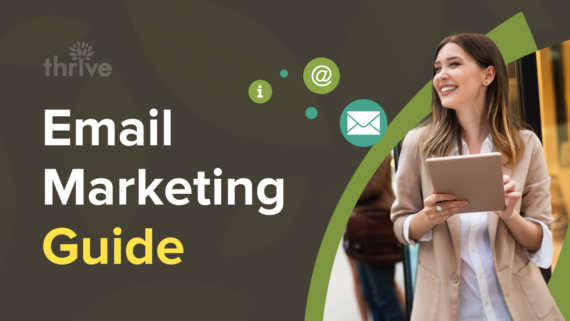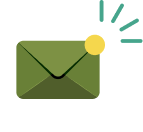Email marketing isn’t just about bombarding folks with sales pitches and spam.
You want your emails to be the ones that people actually look forward to, the emails that somehow skirt past the robotic delete reflex as eyes skim the inbox. And it’s certainly not about overloading inboxes until someone caves.
Email marketing is something that adds value and catches interest. It’s like starting a good conversation. You want to lay down something intriguing right off the bat – a subject line that hooks and a first line that reels them in.
In this email marketing guide, we’re going to break down how to make your emails the ones that light up the ‘new message’ icon and actually stay in the inbox long enough to make an impact.
Here’s an overview of this email marketing 101 guide:
What Is Email Marketing?
7 Benefits of Email Marketing
1. High Return on Investment
2. Direct Customer Engagement
3. Measurable Results
4. Increased Traffic to Your Website
5. Personalization Opportunities
6. It’s Cost-Effective
7. Builds Relationships and Trust
15 Email Marketing Best Practices to Build a Winning Campaign
1. Personalize Your Emails
2. Use Segmentation for Tailored Content
3. Optimize for Mobile Users
4. Nail the Subject Line
5. Keep Emails Brief and to the Point
6. Test and Tweak Based on Metrics
7. Include Clear Calls to Action
8. Provide Real Value in Every Message
9. Make Subscribing and Unsubscribing Simple
10. Use Automation Wisely
11. Maintain Consistent Branding
12. Prioritize Permission-Based Marketing
13. Engage with Storytelling
14. Implement A/B Testing Regularly
15. Leverage Social Proof and Testimonials
Frequently Asked Questions
What Is Email Marketing?
First, what is email marketing?
As a branch of digital marketing, email marketing involves sending commercial messages to a group of potential or current customers via email.
For companies and brands, email serves different purposes, such as:
• Promoting products or services
• Engaging with customers and building relationships
• Informing subscribers about updates or news
• Driving traffic to a website or landing page
According to Statista, there are 4.26 billion email users around the world, more than half of the global population. In 1978, Gary Thuerk sent the first commercial email promoting Digital Equipment Corporation’s computers. Since then, email marketing has evolved to become a crucial tool for businesses of all sizes.
7 Benefits of Email Marketing
So, what makes email marketing a must-have in your digital and content marketing strategy?
Before we go to the tips section of this email marketing guide, here are seven benefits for you to hit that “Send” button:
1. High Return on Investment
The biggest perk of email marketing is its high return on investment (ROI). According to the Financial Post, every dollar spent on email marketing sees an average return of $42. Let’s say you spend $100 on an email campaign; you can potentially earn $4,200 in return. That 4,200% ROI is a considerable figure you can’t ignore.
How could this happen, though? There are three things email marketing could offer:
• Low Cost: Unlike other marketing channels, email marketing doesn’t require a hefty budget. There’s no need for expensive ad space or production costs. With the right strategy and tools, you can reach a large audience without breaking the bank.
• Targeted Messaging: Email allows for highly targeted messaging. You can segment your audience based on their preferences, behaviors and past interactions with your brand. This means your messages are more relevant and, therefore, more effective.
• Easy Tracking: With email marketing, you can track metrics like open rates, click-through rates and conversions. This data allows you to improve your campaigns and see a higher ROI in the long run.
Emails are not your free growth hack. But their potential ROI makes them a valuable part of your marketing mix.
2. Direct Customer Engagement
Have you heard the term “the money is in the list”? It refers to how your email subscribers are potential customers and can lead to sales. And that’s true for 49% of consumers who want to hear from your company at least once a week.
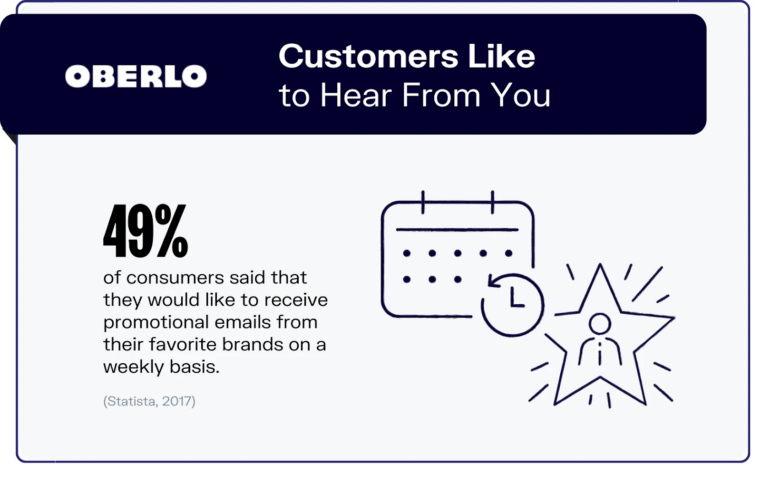
Image from Oberlo
With email, feedback loops are shorter, you maintain consistent contact with your audience and add a personal touch for each reader.
Controlled narrative is another benefit of direct customer engagement. From the content itself, the timing of your emails and the frequency of sending them out, you control the message and build a relationship with your audience.
3. Measurable Results
The biggest fear of any marketer would be investing time and resources into a campaign with no way to measure its success. With email marketing, that’s not an issue. You can track several metrics to gauge how well your emails are performing, such as:
• Open rates
• Click-through rates
• Conversion rates
One way to test if something is working is A/B testing. We’ll discuss this more later, but basically, you send out two versions of an email to a small segment of your list and see which one performs better.
Most email marketing tools also offer analytics that provide insights into subscriber behavior and preferences, giving you valuable data for future campaigns. This helps you make informed decisions and continuously improve your email marketing strategy.
4. Increased Traffic to Your Website
All your content from websites, emails and social media are interconnected. So, when done the right way, your emails can also drive traffic to your website. For example, you can include links or buttons in your emails that lead readers directly to your website for more information or an offer.
You probably already received marketing emails that do this. Check out this email newsletter sent by Moz:
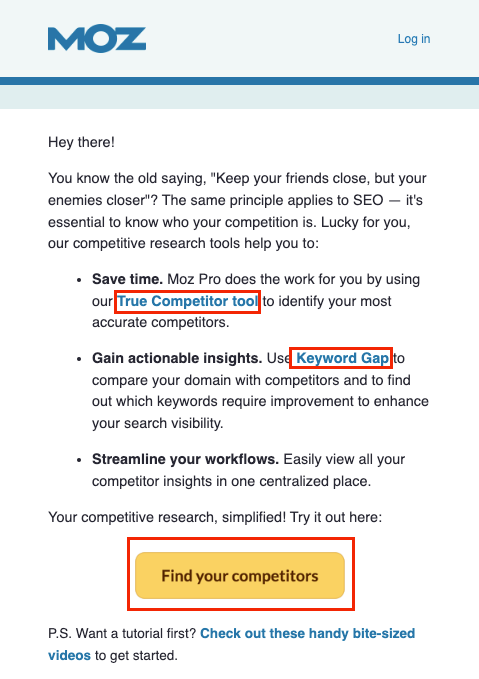
They link their website resources and tools, encouraging readers to click and explore more. User experience plays a huge role here, though. You want all your links to organically blend with the rest of your content so that neither the email service provider nor your audience think it’s spam.
5. Personalization Opportunities
Like we said, with emails, you control the narrative. You can tailor your messages to each subscriber, making them feel special and valued. And it works! According to Campaign Monitor, emails with personalized subject lines are 26% more likely to get opened.
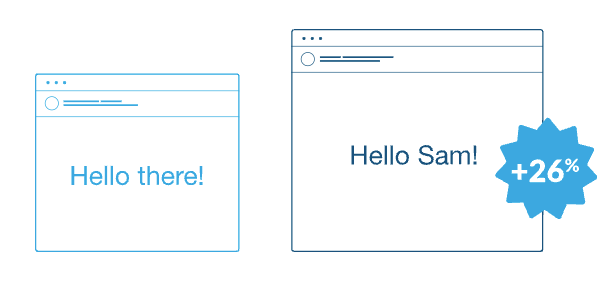
Aside from subject lines, there are tons of other elements that you can personalize as well, such as:
• Content that’s based on past purchases or interests
• Recommended products/services based on browsing history
• Birthday/anniversary messages
Emails offer a unique opportunity to get more intimate and personal, which is something you can’t do with other platforms. While privacy is a concern here (we’ll discuss this more later), personalization can greatly improve the effectiveness of your email marketing.
6. It’s Cost-Effective
In a Barilliance report, the top 18% of companies get as much as $70 per dollar invested in email marketing. Optin also found that email is 40 times more effective than X (formerly called Twitter) and Facebook.
It’s okay to be on the fence with email marketing. Many businesses are hesitant to invest their resources in something that may seem outdated or less flashy compared to social media marketing. However, statistics prove otherwise.
With excellent ROI and a long-term impact, email marketing is a cost-effective solution for businesses of all sizes.
7. Builds Relationships and Trust
At the end of the day, email marketing is all about building relationships and trust with your audience. When you consistently put out valuable content, you become top-of-mind for your subscribers, who’ll be more likely to convert into customers.
This strategy is called nurturing, which is sending targeted and relevant content to subscribers based on their actions. By segmenting your audience and providing them with personalized content, you can build trust and establish yourself as a credible source of information.
This will ultimately lead to higher engagement rates, click-throughs and conversions.
15 Email Marketing Best Practices To Build a Winning Campaign
So, what makes a successful email marketing campaign? That’s a tricky question to answer since each email campaign is different – in purpose, content and audience. However, there are some email marketing best practices that any business can follow to improve their chances of success:
1. Personalize Your Emails
Many companies think this step is optional in their email marketing strategy. However, generic emails are as good as sending spam. Personalization can go a long way in establishing relationships with your subscribers and improving engagement rates.
What’s the best way to do this? Here are five opportunities to personalize your content:
• Use the subscriber’s name in the subject line or introduction of the email.
• Segment your audience based on interests, demographics or behavior and send targeted content to each group.
• Send personalized recommendations or offers based on previous purchases or interactions with your brand.
• Ask for feedback and use that information to tailor future emails to their interests and needs.
• Utilize dynamic content that changes based on the subscriber’s behavior or data.
Personalization adds more depth to the content you send. When people see they’re receiving handpicked content based on their interests, they’re likely to engage with your email. This is something you can only achieve if you know your audience well and collect the necessary data to personalize your emails.
2. Use Segmentation for Tailored Content
We touched on this earlier, but what is it exactly? Segmentation is the process of dividing your subscribers into smaller groups based on shared characteristics.
“The key component is understanding the client’s objective and their target audiences, as this will aid in creating a campaign aligned with the client’s objective and target audience,” said a email marketing strategist from Thrive.
These characteristics can include
• Interests
• Demographics (age, gender, geofencing)
• Behavior (engagement with previous emails, website activity
(Read more: What Is Market Segmentation?)
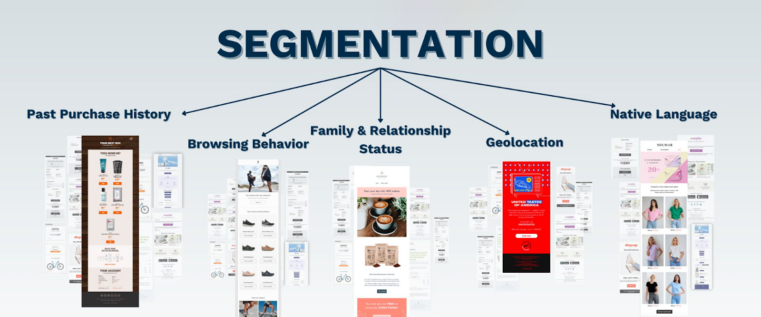
Segmenting your audience allows you to send more targeted and relevant content to each group. For instance, new subscribers might receive a welcome series, while long-time customers get loyalty rewards. This approach ensures that your emails are always relevant, which can lead to higher engagement rates, increased conversions and a reduced likelihood of unsubscribes.
Depending on your service provider, you may also be able to segment your audience using custom fields or tags. This allows for even more personalized content based on specific data points unique to your business.
3. Optimize for Mobile Users
Over 1.7 billion people view their emails from smartphones. And why not? It’s portable, accessible and convenient. However, this also means that your emails need to be optimized for mobile viewing.
Keep in mind the following email marketing tips when designing your email for mobile users:
• Use a single-column layout
• Keep font sizes at least 14px for easy reading
• Use buttons instead of hyperlinked text for calls to action
• Keep subject lines concise (under 50 characters)
Take a look at this pet supplement company’s Welcome Email:
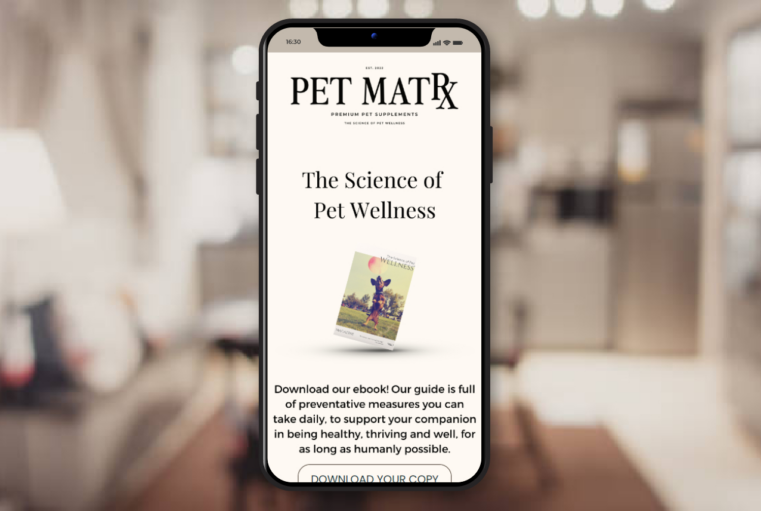
Image from Pet Supplement Company
The email’s design takes mobile in mind, which makes it consistent with how it looks on tablet and desktop:
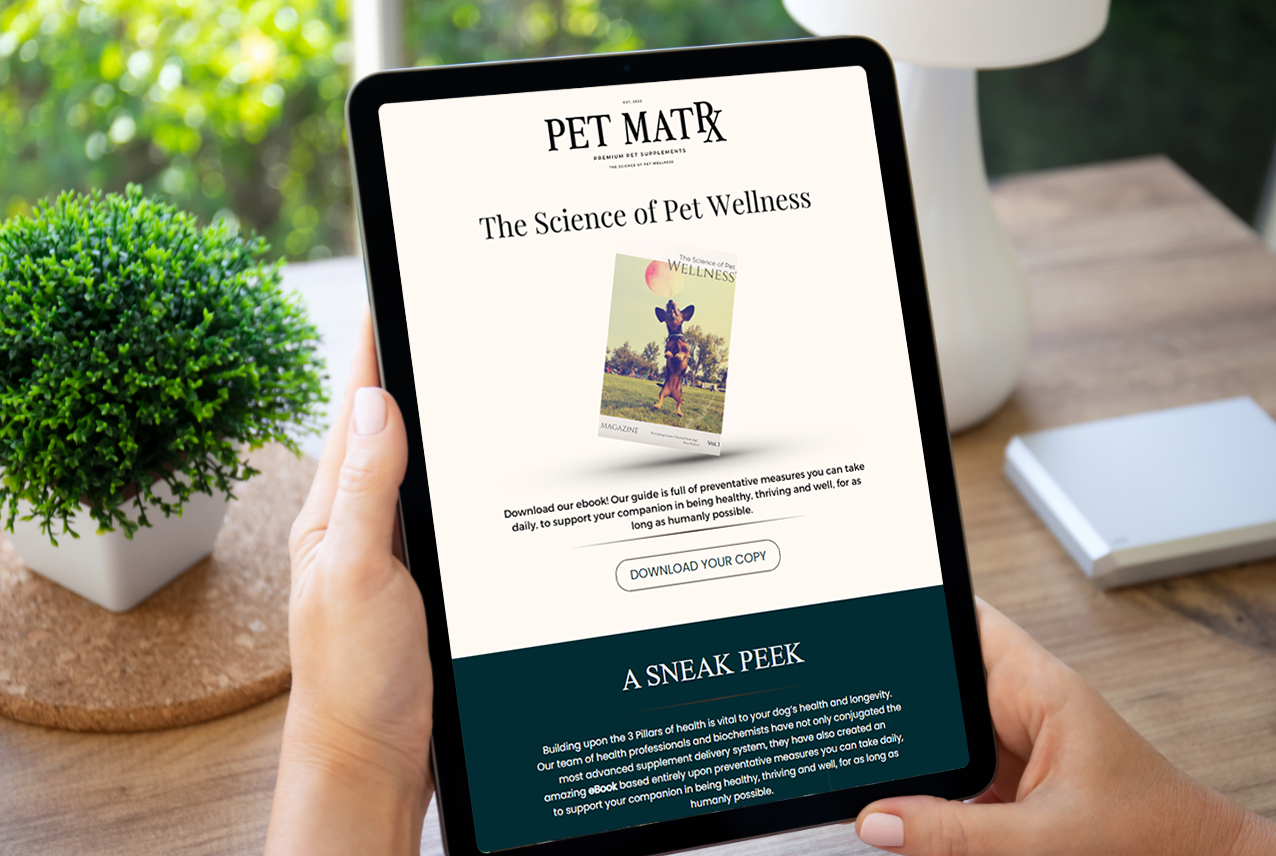
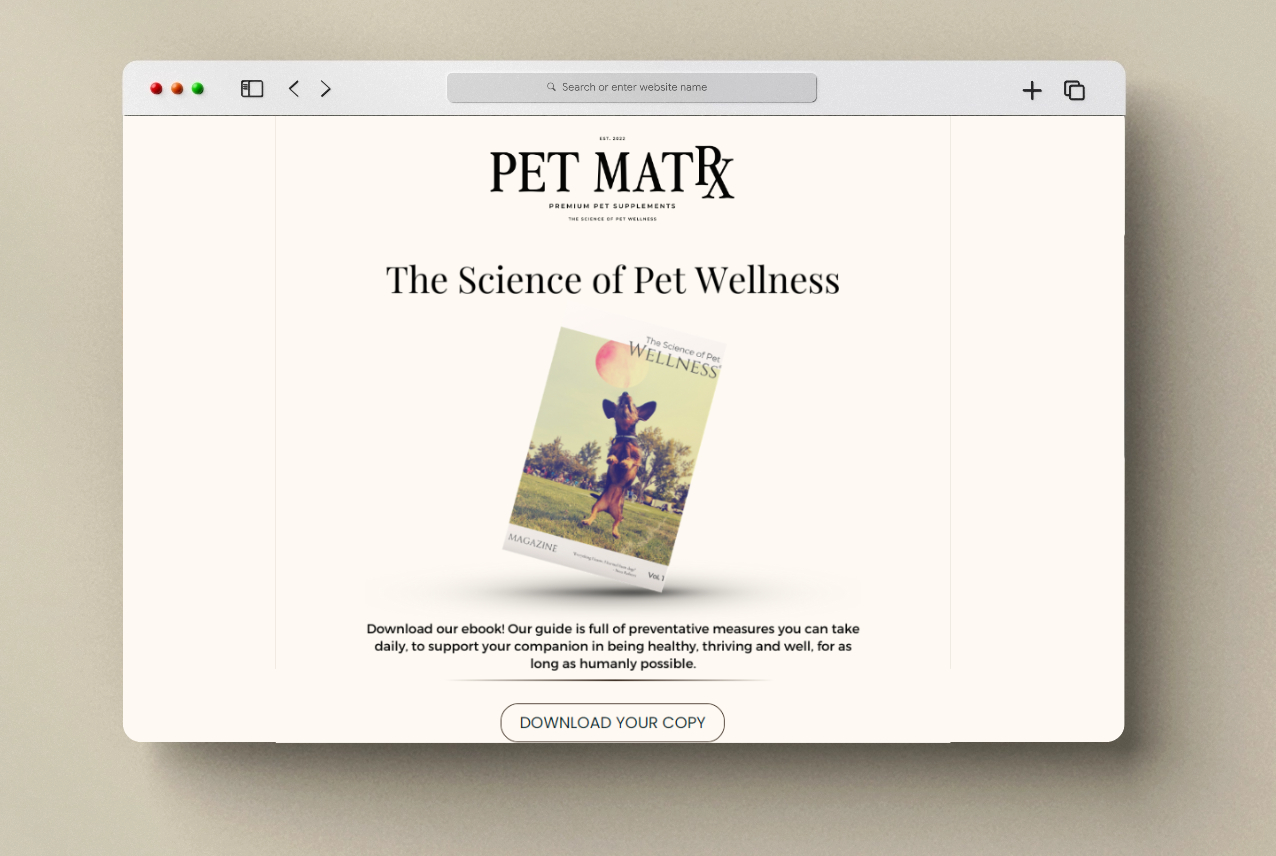
Image from Pet Supplement Company
Being mobile-friendly means getting into the pockets of your customers because that’s where their phones are. But, it also means providing a positive user experience because the transition from desktop to mobile device is not jarring.
4. Nail the Subject Line
The subject line is your first (and sometimes only) chance to grab your audience’s attention. If you botch it, your email will likely go unopened and unread.
“Subject lines should be concise, intriguing and relevant to the content,” said Nada Khafaga, Thrive’s creative content lead.
So, how do you write a subject line that stands out? Here are some email marketing tips:
• Keep them short and sweet: People mostly skim their inboxes, so shorter subject lines have a better chance of being read.
• Personalize when possible: Use your recipient’s name or reference their interests to catch their eye.
• Avoid spam trigger words: Words like “free,” “guaranteed” and “discount” can send your email straight to the spam folder.
Of course, your subject lines shouldn’t be clickbait-y.
Don’t say something in the subject line that isn’t reflected in the email content. If you promise them a discount in the subject line, make sure that’s what they’ll find when they open the email. If it’s framed as a strategy-boosting tip, make sure the email delivers on that.
Failing to deliver on your subject line leads to a loss of trust and credibility. And with the vast amount of emails people receive daily, you don’t want yours to be seen as just another spammy or misleading message.
5. Keep Emails Brief and to the Point
Wasting time is never appreciated, especially when it comes to emails. If your email is just a bunch of fluff, your recipient will quickly delete it or unsubscribe.
“With layout and design, simplicity often works best,” said Khafaga.
Start with a clear purpose. If it’s a marketing email, state your offer or call to action right away. If it’s an informational email, summarize the main points at the beginning and then provide more details below.
Negative space plays a huge role in this as well. Don’t overwhelm your reader with large blocks of text. Instead, use bullet points or numbered lists to break up information and make it easier to digest.
Khafaga explains that “a clear hierarchy guides the reader smoothly through the content, making sure they don’t miss the good stuff.”
Take a look at this tech retailer company’s email:
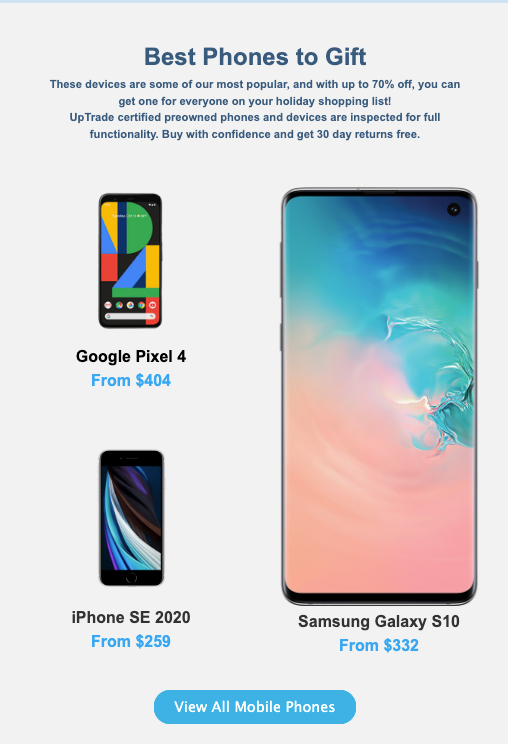
Image From Case Study
Once you open their email, you’ll have a clear goal: buy a gadget from them. You don’t spend a second deciphering why you even needed to read their email since its intentions are clear with easily digestible texts and design.
6. Test and Tweak Based on Metrics
The beauty of email marketing lies in its measurability. Every email you send gives valuable data that helps you improve your strategy. Some of these metrics include the following:
• Open rate: The percentage of people who opened your email.
• Click-through rate (CTR): The percentage of people who clicked on a link within your email.
• Conversion rate: The percentage of people who completed the desired action, such as making a purchase or filling out a form.
“We can see how an email performed with a client’s Email Service Provider (ESP), such as how many people opened, clicked or unsubscribed,” the strategist said.
If you find that your open rate is low, try adjusting your subject line. If your CTR is low, try making your call to action more prominent or changing the placement of links within the email. Keep testing and tweaking until you find what works best for your audience.
“Improving numbers can be achieved by trying out a new format, new imagery and providing a different tone of voice in the content.”
7. Include Clear Calls to Action
Your email reads really well, but why aren’t you seeing results? It could be because you’re not including clear calls to action (CTAs).
A CTA is a statement or phrase that prompts the reader to take a specific action. This can be anything from “Shop now” to “Sign up for our newsletter.” Make sure your CTAs stand out and are easily identifiable within your email.
Use bold fonts, bright colors and action words to grab your reader’s attention and entice them to take the desired action.
(Read more: Great CTAs: Rules For Making Them Effective)
However, be careful not to include too many CTAs in one email, as this can overwhelm the reader and decrease their likelihood of taking any action at all. Stick to one or two clear and concise CTAs per email.
8. Provide Real Value in Every Message
Subscribers open their emails with the expectation of receiving something worthwhile, whether it’s information, entertainment or exclusive offers. Failing to meet these expectations leads to distrust, unsubscribers and even bad word-of-mouth.
“One common mistake is underestimating the importance of providing value,” said Khafaga.
“Some companies focus too much on selling and promotional content, neglecting the need to engage and educate their audience.”
This is a really tricky strategy since “value” looks very different across companies and audiences, but here are some steps to get you started:
• Understand your audience: Know what they are looking for and what will be valuable to them. Conduct research or surveys to gather insights.
• Diversify your content types: Mix up your content by including educational articles, entertaining videos or informative infographics.
• No sales fluff: While promoting your products or services is important, make sure to provide value first. Offer helpful tips, how-to guides or exclusive discounts.
“When curating email content, let’s not just be all about the products,” Khafaga explains.
“Toss in some interesting facts, useful guides or a peek behind the curtain. It’s about building a relationship, not just pushing stuff.”
It’s crucial to remember that every email you send should have a purpose and provide something of value to your subscribers. This will not only keep them engaged but also build trust in your brand.
9. Make Subscribing and Unsubscribing Simple
Some people will just want to come and go, and that’s okay. Make sure your email subscription process is easy for your subscribers to manage. If they decide to opt out, don’t make them jump through hoops or fill out lengthy surveys just to unsubscribe.
For email subscriptions, your form should be straightforward and accessible, with minimal steps to complete:

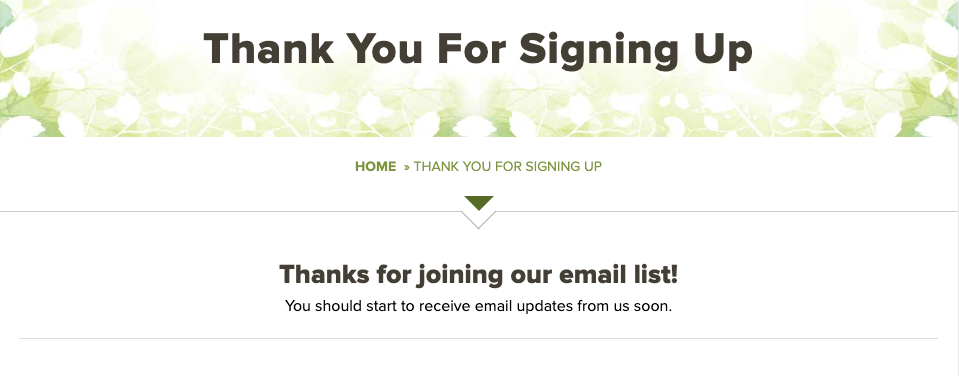
Screenshots From Digital Marketing Blog Showing the Process of Signing Up to Their Email List
Unsubscribing should be just as easy, too. You want it to be a one-click process that readers can easily find. Don’t hide it or make it difficult to locate, as this can leave a negative impression and potentially damage your brand’s reputation.
10. Use Automation Wisely
Email automation and artificial intelligence (AI) are the norm today. Need that campaign scheduled for next week? No problem. Want to send personalized emails to a specific group of subscribers based on their interests or actions? Easy peasy.
But while automation can save you time and effort, use it wisely.
Make sure your automated emails are relevant and timely and not just generic messages that could come off as impersonal or spammy. It’s important to ensure that even automated emails feel tailored and meaningful to the recipient. Segment your audience and use behavioral triggers to send automated emails that feel as personalized as possible.
Remember that your subscribers are real people, so treat them as such. Personalization and human interaction can go a long way in building lasting relationships with your customers.
11. Maintain Consistent Branding
Real humans also like engaging with a brand they can relate to, trust and recognize. Remember when we said emails directly engage subscribers? Consistent branding is a key factor in building that trust and recognition.
Here are five elements to nail your branding via email:
• Logo: Make sure your logo is prominently displayed in all of your emails. This helps readers easily identify your brand and create a sense of familiarity.
• Color scheme: Use consistent colors throughout your emails to maintain a cohesive look and feel.
• Font choice: Stick to one or two fonts that represent your brand and use them consistently in all emails.
• Visuals: Incorporate visual elements that reflect your brand, such as images or graphics. Make sure they are high quality and align with your brand’s aesthetic.
• Voice and tone: Whether it’s friendly and conversational or professional and formal, make sure it aligns with your brand’s overall communication style.
Branding your emails makes it easier for your audiences to keep you top-of-mind and recognize your brand among the clutter of their inbox. You can’t rely on just one email to make a lasting impact, but consistent branding can help you stay relevant and memorable in your subscribers’ eyes.
12. Prioritize Permission-Based Marketing
Have you heard of zero-party and first-party data? These terms refer to the information that customers willingly share with brands, such as:
• Preferences
• Interests
• Contact information
“Utilize customer data responsibly and transparently,” said Khafaga.
“Let’s make it crystal clear how we’re using their data and give them the reins to control their preferences.”
Zero-party data are those explicitly given by customers, while first-party data are collected through interactions with your brand. Permission-based email advertising is built on the foundation of this data, where you obtain explicit consent from customers before sending them promotional messages.
Your audience likes this, especially with growing concerns about privacy. When customers feel in control of their data and receive tailored content from someone they willingly engage with, they’re more likely to engage in your brand’s communication.
13. Engage With Storytelling
People like to hear stories. In fact, a whole marketing strategy is built around telling stories. This is called the StoryBrand formula. Coined by Donald Miller, it is a framework used by businesses to connect with their target audience and create a compelling narrative around their brand.
(Read more: Your Ultimate Brand Storytelling Guide)
Here are the components of the StoryBrand formula:
• A character (your customer)
• Has a problem
• Encounters a guide (your brand)
• Who gives them a plan
• And calls them to action
This framework is great with email campaigns since it provides a structure for your message and helps you create a clear call to action. When readers can relate to the story and see themselves as the character, they are more likely to follow through with the call to action.
14. Implement A/B Testing Regularly
You can only maximize your campaigns’ ROI if you know what works and what doesn’t. A/B testing different elements of your email campaigns, such as subject lines, send times and content layout, helps you determine the most effective strategies for your audience.
Here’s a quick rundown of how to conduct an A/B test:
1. Identify the element you want to test (e.g., subject line).
2. Create two variations of this element.
3. Randomly divide your audience into two groups, with each group receiving one variation.
4. Measure the success of each variation based on your predetermined metrics (e.g., open rates).
5. Use the results to determine which variation performed better and use that knowledge to inform future campaigns.
A/B testing your email makes your strategy more data-driven and allows you to continuously improve and optimize your campaigns for better results. So, don’t be afraid to experiment and see what works best for your brand and audience.
15. Leverage Social Proof and Testimonials
Customer reviews and testimonials still have a place in someone’s inbox. And it makes sense. Emails are all about nurturing trust with your audience. The best way to do this is to highlight positive experiences from others who have used and loved your product or service.
Include a section in your email that showcases real customer testimonials, ratings or reviews. This social proof can help convince readers to take action and trust your brand.
Here’s how a digestive supplement company leverages testimonials to boost brand trust:
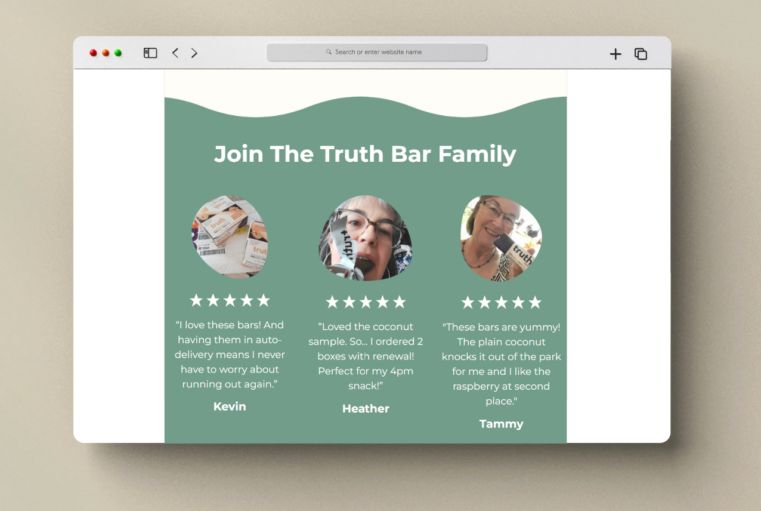
Image From Digestive Supplement Company
It cleverly uses user-generated content and reviews in its email design to establish trust. After all, if other people trust the company’s supplements, then you should, too, right?
Create Better Email Campaigns With Thrive
Unlike popular opinion, email marketing has a lot of moving parts, and it takes a lot more than designing a fancy newsletter to be successful. This email marketing guide makes your campaigns better, more data-driven and more effective.
With the right strategies, tactics and tools, you can create email campaigns that engage your audience, nurture relationships and drive conversions.
And email marketing is not an easy task to do alone. That’s why we offer comprehensive email marketing solutions. Thrive Internet Marketing Agency comprises a strong team of 200+ strategists, experts and creatives that craft bespoke email campaigns for our clients.
Unlock your email potential with us today!
Frequently Asked Questions
1. WHAT EXACTLY IS INCLUDED IN AN EMAIL MARKETING STRATEGY?
A lot of things are involved when building and running an email marketing strategy. Common components of an email marketing strategy include building an email list, segmenting your audience, creating engaging and personalized content, optimizing for deliverability and tracking performance. Depending on your company’s objectives, this could also include automation, A/B testing and integration with CRM systems.
2. HOW OFTEN SHOULD I SEND A MARKETING EMAIL TO MY LIST WITHOUT BEING SPAMMY?
A good rule of thumb is to send marketing emails when you have something valuable to say. For most companies, this means sending emails anywhere from once a week to once a month. Thrive’s email strategist recommends sending them in the middle or at the end of the week. These emails also perform better in the morning. Avoid inundating your subscribers with daily or multiple emails per day, as this can lead to high unsubscribe rates and negatively impact your sender reputation.
3. WHAT’S THE BEST WAY TO GROW MY EMAIL LIST?
Common strategies include offering value upfront in exchange for email sign-ups, such as exclusive content, discounts or early access to products. Make sure your sign-up forms are prominently placed on your website and social media channels, and consider leveraging partnerships for co-marketing efforts to reach new audiences. Engaging in online and offline events also provides opportunities to encourage sign-ups.
4. CAN YOU GIVE ME SOME QUICK EMAIL MARKETING TIPS TO IMPROVE MY EMAIL OPEN RATES?
Start with crafting compelling subject lines that pique curiosity or offer value to your subscribers. You can also customize your sender name to something or someone recognizable to your audience. This allows them to associate the email with a trusted source, increasing the likelihood of it being opened. Send times and frequency also play a crucial role in open rates, so consider testing different days and times to see when your subscribers are most active.
5. WHICH METRICS SHOULD I PAY THE MOST ATTENTION TO WHEN REVIEWING AN EMAIL CAMPAIGN’S SUCCESS?
The best metrics to benchmark your email campaign success are open rates, click-through rates and conversion rates. Open rates measure how many subscribers opened your email, click-through rates track the number of clicks on links within your email, and conversion rates indicate the percentage of subscribers who took a desired action after opening your email. For some companies that have specific goals for their email campaigns, other metrics like revenue or social shares may also be important to track.
6. DO I NEED TO USE AN EMAIL SERVICE PROVIDER? WHY?
ESPs allow you to scale your email advertising – you can send to more people at a faster, more consistent rate while maintaining deliverability. They also offer features like automation, segmentation and analytics that help you personalize and improve your email campaigns. ESPs also include built-in design tools, making it easier to create professional-looking emails without coding experience.
7. HOW CAN I MAKE SURE MY EMAILS DON’T END UP IN THE SPAM FOLDER?
The most vital component here is consent. Do your subscribers know they’re on your list? If they don’t, your email is likely to be marked as spam. Make sure you have explicit permission from each of your subscribers before sending them a marketing email. Other factors that can contribute to landing in the spam folder include using too many exclamation points or salesy language in the subject line and body of your email, not having a clear unsubscribe link and not regularly cleaning your email list of inactive or unengaged subscribers.
It’s also crucial to follow spam laws and regulations, such as including a physical address in all emails and honoring unsubscribe requests promptly. Use protocols like DKIM and SPF to authenticate your emails further and improve deliverability.
8. WHAT ARE SOME COMMON PITFALLS IN EMAIL MARKETING THAT I SHOULD AVOID?
Companies often make the mistake of sending too many emails, which can result in subscriber fatigue and higher unsubscribe rates. It’s important to strike a balance and only send relevant and valuable content to your subscribers. Another common pitfall is not segmenting your email list – sending the same message to all subscribers may not be effective or engaging for everyone. Personalization is key in modern email advertising, so take the time to segment your list and tailor your content accordingly.

